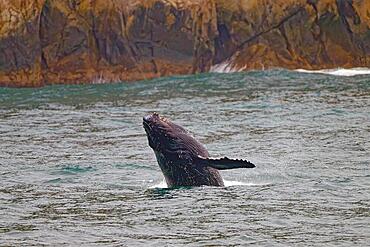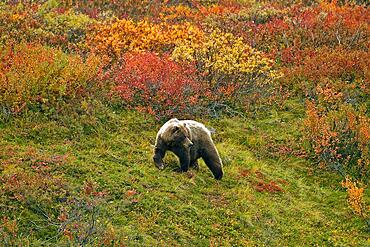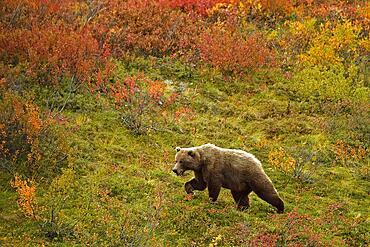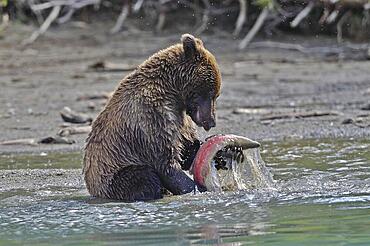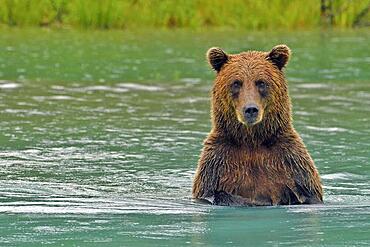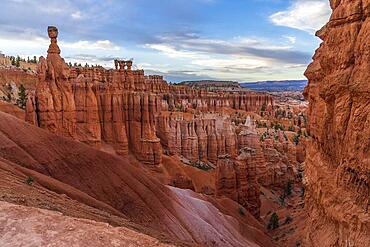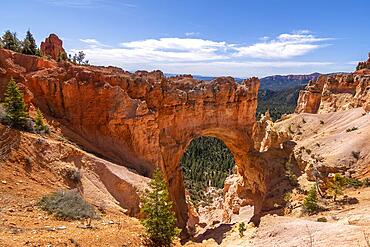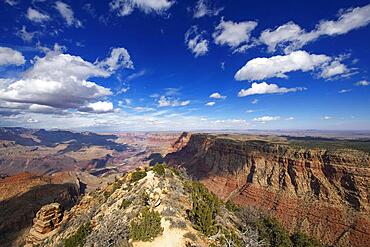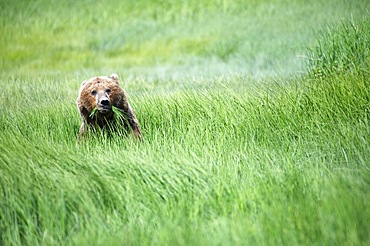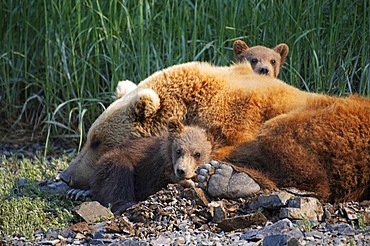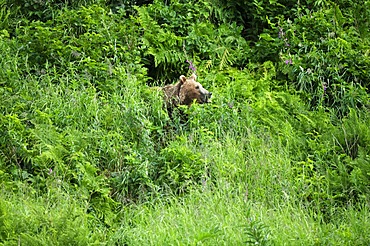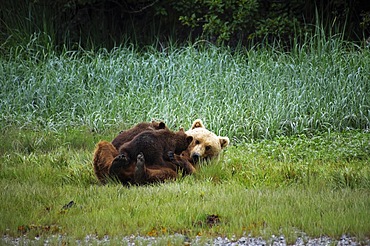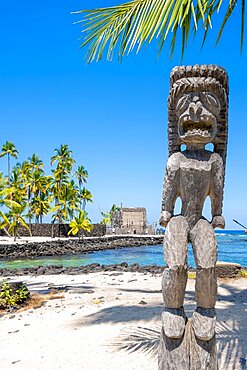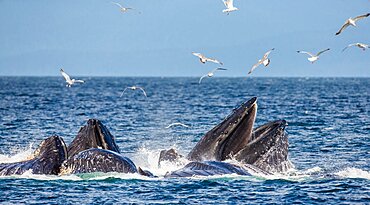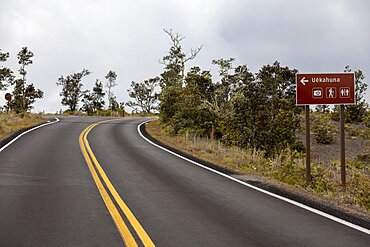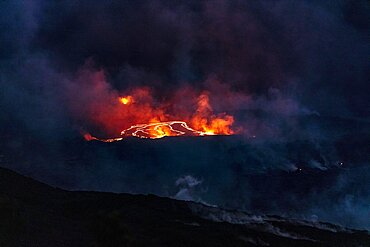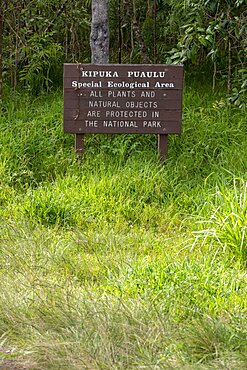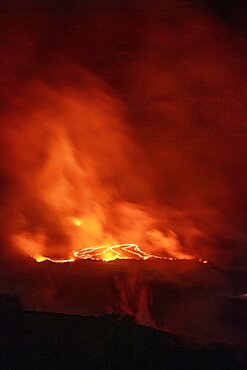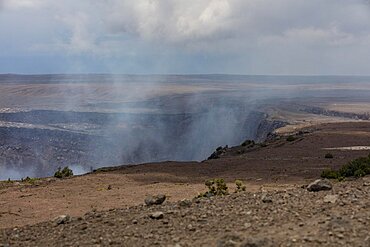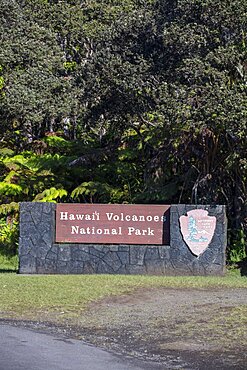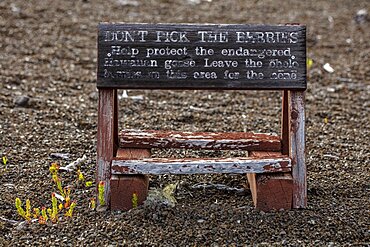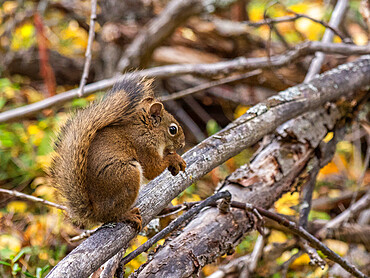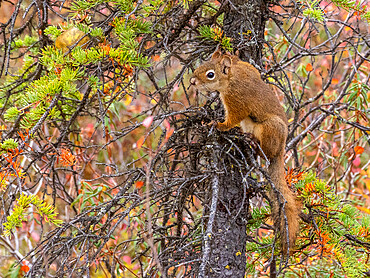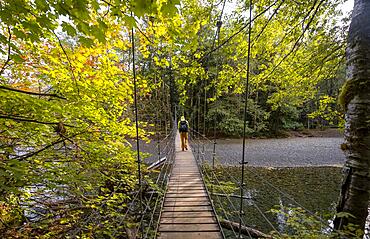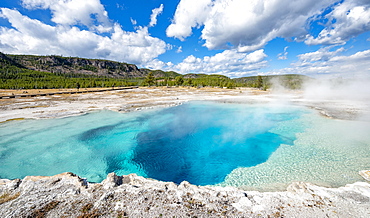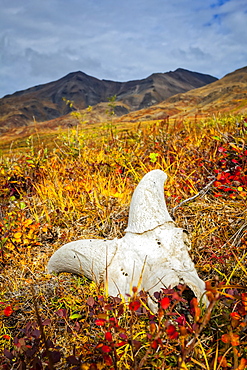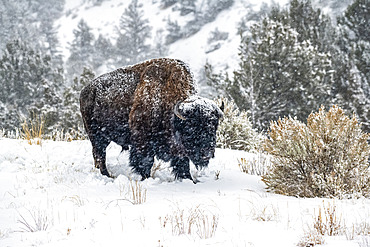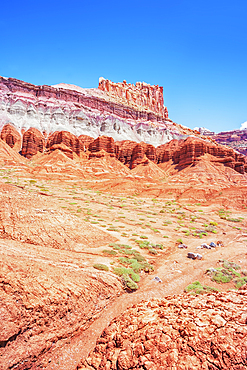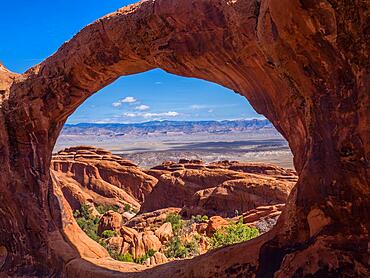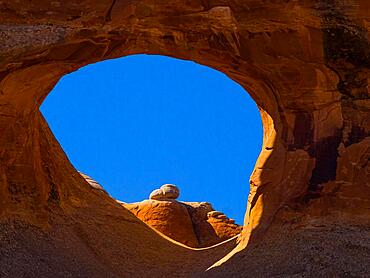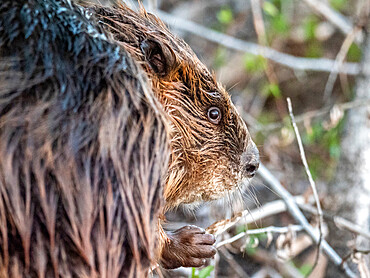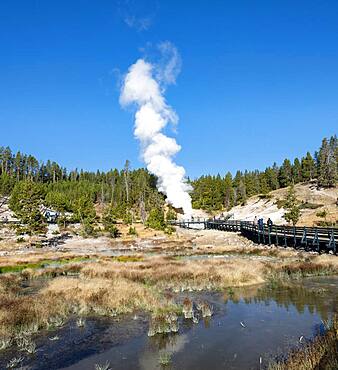Recent searches
Loading...
832-404487 - Humpback whale (Megaptera novaeangliae) up to the pectoral fin above the water surface, rocky coastline behind, Kenai Fjords National Park, Alaska, USA, North America
832-404307 - Vernal Falls waterfall of Yosemite National Park from the water that falls into the stones in sunset, long exposure photo. California, United States, North America
1112-8625 - An adult female American black bear (Ursus americanus), Big Bend National Park, Texas, United States of America, North America
832-402854 - Pika (Ochotona) standing among boulders and on large rocks, Denali National Park, Alaska, USA, North America
832-402846 - Grizzly bear (Ursus arctos horribilis) striding across the autumn-coloured tundra with a view of the coloured berry bushes, Denali National Park, Alaska, USA, North America
832-402847 - Brown bear (Ursus arctos) standing on its hind legs in the water with a freshly caught salmon in its mouth, Lake Clarke National Park, Alaska, USA, North America
832-402845 - Grizzly bear (Ursus arctos horribilis) striding across the autumn-coloured tundra with a view of the coloured berry bushes, Denali National Park, Alaska, USA, North America
832-402844 - Young brown bear (Ursus arctos) sitting on the shore playing with a salmon, Lake Clarke National Park, Alaska, USA, North America
832-402843 - Brown bear (Ursus arctos) standing on hind legs in tall grass, her cub sitting in front of her, Lake Clarke National Park, Alaska, USA, North America
832-402842 - Brown bear (Ursus arctos) standing on hind legs up to chest in water and looking at camera, Lake Clarke National Park, Alaska, USA, North America
832-402834 - Road in Denali National Park, the first 24 kilometres are paved, Alaska, USA, North America
832-401310 - Thor's Hammer, Bryce Amphitheatre, Bryce Canyon National Park, Utah, USA, North America
832-401309 - Rock arch at Natural Bridge viewpoint, Bryce Canyon National Park, Utah, USA, North America
832-400732 - View from South Rim, Grand Canyon National Park, Arizona, USA, North America
832-400733 - Desert View Observation Tower, South Rim, Grand Canyon National Park, Arizona, USA, North America
832-399882 - Coastal brown bear (Ursus Arctos middendorfi), grizzly bear lifting rock to look for shells, Katmai National Park, Alaska, USA, North America
832-399883 - Coastal brown bear (Ursus Arctos middendorfi), grizzly bear eating sedge, Katmai National Park, Alaska, USA, North America
832-399885 - Coastal brown bear (Ursus Arctos middendorfi) Grizzly bear eating sedge, Katmai National Park, Alaska, USA, North America
832-399884 - Mother bear with two cubs, coastal brown bear (Ursus Arctos middendorfi), Kukak Bay, Katmai National Park, Alaska, USA, North America
832-399886 - Grizzly bear in thicket takes scent, Katmai National Park, Alaska, USA, North America
832-399887 - Mother bear suckling her two cubs, grizzly bear, coastal brown bear (Ursus Arctos middendorfi), Kukak Bay, Katmai National Park, AlaskaGrizzly bear suckling her two cubs, Katmai National Park, Alaska, USA, North America
1350-6678 - Strawberry Poison Frog (Dendrobates pumilio), adult, Bastimentos National Park, Bocas del Toro, Panama. The strawberry poison frog or strawberry poison-dart frog (Oophaga pumilio or Dendrobates pumilio) is a species of small amphibian poison dart frog found in Central America. It is common throughout its range, which extends from eastern central Nicaragua through Costa Rica and northwestern Panama. The species is often found in humid lowlands and premontane forest, but large populations are also found in disturbed areas such as plantations. The strawberry poison frog is perhaps most famous for its widespread variation in coloration, comprising approximately 15���30 color morphs, most of which are presumed to be true-breeding. O. pumilio, while not the most poisonous of the dendrobatids, is the most toxic member of its genus. The species is most diverse in Panama with varieties in vivid shades of all red, orange, blue, yellow or green, green and yellow, white with red, orange or black and spotted varieties. The most colorful mix is found in Isla Bastimentos Marine National Park though not all in one place. Colors vary by location. A beach on the north side of the island is named after the species. Two of Southern Explorations' Panama tours visit red frog habitat. Both the eight-day Panama Adventure trip and eleven-day Panama Highlights trip spend time in Isla Bastimentos Marine National Park and the former also goes to Red Frog Beach.
The red frog is not as poisonous as some of its cousins and is not a threat to humans. It subsists on a diet of ants that dine on poisonous plants, providing the red frog its protective skin toxin. Males attract females with a loud quick chirp. To hear the distinctive sound before you depart on your Panama tours, go to the University of Michigan Museum's biodiversity website (www.animaldiversity.ummz.umich.edu.) After birth, the tadpoles climb aboard the mother who deposits them in different protected areas where she retu
832-398246 - Pu'uhonua O Honaunau National Historical Park, Big Island, Hawaii, USA, North America
832-398245 - Pu'uhonua O Honaunau National Historical Park, Big Island, Hawaii, USA, North America
832-397659 - Impressive rock formations in Grand Canyon National Park, aerial view, Arizona, USA, North America
832-397759 - Waterfall, Lower Falls, Mountain River in a Gorge, Johnston Creek in Johnston Canyon, Bow Valley, Banff National Park, Rocky Mountains, Alberta, Canada, North America
832-397758 - Waterfall, Lower Falls, Mountain River in a Gorge, Johnston Creek in Johnston Canyon, Bow Valley, Banff National Park, Rocky Mountains, Alberta, Canada, North America
860-291137 - Bubble-net feeding of the Humpback whales (Megaptera novaeangliae). Chatham Strait area. Alaska. USA.
860-291136 - Jumping of Humpback whale (Megaptera novaeangliae). Chatham Strait area. Alaska. USA.
860-291138 - Bubble-net feeding of the Humpback whales (Megaptera novaeangliae). Chatham Strait area. Alaska. USA.
860-291139 - Bubble-net feeding of the Humpback whales (Megaptera novaeangliae). Chatham Strait area. Alaska. USA.
832-397271 - Hawai'i Volcanoes National Park, sign at the entrance, Volcano Village, Big Island, Hawaii, USA, North America
832-397274 - Crater Rim Drive, tourist road in Hawai'i Volcanoes National Park, Big Island, Hawaii, USA, North America
832-397278 - Active eruption, Kilauea Volcano, Halema'uma'u Crater, Hawai'i Volcanoes National Park, Big Island, Hawaii, USA, North America
832-397276 - Active eruption, Kilauea Volcano, Halema'uma'u Crater, Hawai'i Volcanoes National Park, Big Island, Hawaii, USA, North America
832-397270 - Kipuka Puaulu, Special Protection Zone, Ecology, Hawai'i Volcanoes National Park, Volcano Village, Big Island, Hawaii, USA, North America
832-397277 - Active eruption, Kilauea Volcano, Halema'uma'u Crater, Hawai'i Volcanoes National Park, Big Island, Hawaii, USA, North America
832-397281 - Active eruption, Kilauea volcano, Hawai'i Volcanoes National Park, Big Island, Hawaii, USA, North America
832-397272 - Hawai'i Volcanoes National Park, sign at the entrance, Volcano Village, Big Island, Hawaii, USA, North America
832-397273 - Don't pick the berries, Ohelo berries, Hawaiian goose forage, Nene, Kilauea Volcano, Hawai'i Volcanoes National Park, Big Island, Hawaii, USA, North America
1112-6916 - An adult American red squirrel (Tamiasciurus hudsonicus) in the trees in Denali National Park, Alaska, United States of America, North America
1112-6915 - An adult American red squirrel (Tamiasciurus hudsonicus) in the trees in Denali National Park, Alaska, United States of America, North America
1113-107331 - Delicate Arch, Arches National Park, Moab, Utah, United States of America,
1113-107330 - Delicate Arch, Arches National Park, Moab, Utah, United States of America,
832-396258 - Hikers on suspension bridge in autumnal forest, Grove of the Patriarchs Trail, Mount Rainier National Park, Washington, USA, North America
832-396256 - View into the valley of Butter Creek, autumnal mountain landscape, Mount Rainier National Park, Washington, USA, North America
832-395304 - Mountain peaks at dawn, Grand Teton Range mountain range at sunrise, reflection in lake, autumn vegetation, Schwabacher Landing, Grand Teton National Park, Wyoming, USA, North America
832-394756 - Turquoise clear water of a hot spring, Sapphire Pool, Black Sand Basin and Biscuit Basin, Yellowstone National Park, Wyoming, USA, North America
832-394759 - Black Opal Pool, Hot Spring, Yellow Algae and Mineral Deposits, Biscuit Basin, Yellowstone National Park, Wyoming, USA, North America
832-394761 - Tourist on a logging road in front of steaming hot spring, Biscuit Basin, Yellowstone National Park, Wyoming, USA, North America
832-394760 - Dead trees at Opalescent Pool with mineral deposits, Black Sand Basin, Yellowstone National Park, Wyoming, USA, North America
832-394841 - Hidden Lake with Bearhat Mountain in autumn, Glacier National Park, Rocky Mountains, Montana, USA, North America
832-394758 - Yellow bacteria and algae in a hot spring at Black Sand Basin and Biscuit Basin, Yellowstone National Park, Wyoming, USA, North America
832-394757 - Turquoise clear water of a hot spring, Sapphire Pool, Black Sand Basin and Biscuit Basin, Yellowstone National Park, Wyoming, USA, North America
1116-50682 - Kuyuktuvuk Creek and Brooks Mountains in fall colours. Gates of the Arctic National Park and Preserve, Arctic Alaska in autumn; Alaska, United States of America
1116-50681 - Brooks Mountains and Dalton Highway in fall colours, Gates of the Arctic National Park and Preserve, Arctic Alaska in autumn; Alaska, United States of America
1116-50683 - Dall Sheep's skull on fall coloured tundra, Brooks Mountains in the background. Gates of the Arctic National Park and Preserve, Arctic Alaska in autumn; Alaska, United States of America
1116-50684 - Brooks Mountains and Kuyuktuvuk Creek Valley in fall colours under blue sky. Gates of the Arctic National Park and Preserve, Arctic Alaska in autumn; Alaska, United States of America
1116-51156 - North American beaver (Castor canadensis) eating fresh aquatic vegetation on a lakeshore, Forillon National Park; Quebec, Canada
1116-51152 - North American beaver (Castor canadensis) sitting on a fallen birch tree and eating the bark, Forillon National Park; Quebec, Canada
1116-51149 - North American porcupine (Erethizon dorsatum) watching in vegetation on a lakeshore, Forillon National Park; Quebec, Canada
1116-51153 - North American beaver (Castor canadensis) gnawing bark of a cut branch on a lakeshore, Forillon National Park; Quebec, Canada
1116-51154 - North American beaver (Castor canadensis) standing and gnawing the bark of a fallen birch tree on a lakeshore, Forillon National Park; Quebec, Canada
1116-51443 - Falling snow clings to an American Bison bull (Bison bison) standing in a meadow in the North Fork of the Shoshone River valley near Yellowstone National Park; Wyoming, United States of America
1116-51444 - American Bison bull (Bison bison) on a snowy day in the North Fork of the Shoshone River valley near Yellowstone National Park; Wyoming, United States of America
1116-51155 - North American beaver (Castor canadensis) gnawing bark of a cut branch on a lakeshore, Forillon National Park; Quebec, Canada
1116-51438 - Bighorn Sheep ram (Ovis canadensis) performs lip curl (flehmen display) in the North Fork of the Shoshone River valley near Yellowstone National Park; Wyoming, United States of America
1116-51175 - North American beaver (Castor canadensis) swimming on a lake, La Mauricie National Park; Quebec, Canada
1116-51164 - North American beaver (Castor canadensis) swimming in a lake, La Mauricie National Park; Quebec, Canada
1116-51167 - North American porcupine (Erethizon dorsatum) eating spring fresh leaves up in an aspen tree, Forillon National Park; Quebec, Canada
1116-51439 - Bighorn Sheep ram (Ovis canadensis) approaches through a sagebrush meadow on a snowy day in the North Fork of the Shoshone River valley near Yellowstone National Park; Wyoming, United States of America
1113-106584 - Sandstone cliffs, Capitol Reef National Park, Utah, USA, North America
1113-106585 - The Castle rock formation, Capitol Reef National Park, Utah, USA, North America
1113-106586 - The Castle rock formation, Capitol Reef National Park, Utah, USA, North America
1113-106583 - The Castle rock formation, Capitol Reef National Park, Utah, USA, North America
832-393318 - Steaming hot spring, dead trees in the back, Noris Geyser Basin, Yellowstone National Park, Wyoming, USA, North America
832-393317 - Emerald Spring, Noris Geyser Basin, Yellowstone National Park, Wyoming, USA, North America
832-393698 - Difficult Hiking, sign in Devil's Garden, rock formations, Arches National Park, near Moab, Utah, USA, North America
832-393697 - Double O Arch, rock arch, Devil's Garden Trail, Arches National Park, near Moab, Utah, USA, North America
832-393737 - Footpath to the rocks of the Windows Section, Arches National Park, near Moab, Utah, USA, North America
832-393735 - Tunnel Arch, Arches National Park, Moab, Utah, USA, North America
1350-3326 - Full moon rising over North Cascades from Park Butte Trail, Mount Baker-Snoqualmie National Forest, Washington.
1112-6117 - An adult American red squirrel (Tamiasciurus hudsonicus), in Yellowstone National Park, Wyoming, United States of America, North America
1112-6103 - An adult North American beaver (Castor canadensis) along the shore in Grand Teton National Park, Wyoming, United States of America, North America
1112-6101 - An adult North American beaver (Castor canadensis) along the shore in Grand Teton National Park, Wyoming, United States of America, North America
1112-6102 - An adult North American beaver (Castor canadensis) along the shore in Grand Teton National Park, Wyoming, United States of America, North America
1112-6079 - An adult North American porcupine (Erethizon dorsatum), Bartlett Cove, Glacier Bay National Park, Southeast Alaska, United States of America, North America
832-392517 - Hot spring with steaming turquoise water, Excelsior Geyser Crater, Yellowstone National Park, Wyoming, USA, North America
832-392525 - Steaming hot spring with turquoise water in the morning sun, Black Pool, West Thumb Geyser Basin, Yellowstone National Park, Wyoming, USA, North America
832-392524 - Steaming hot spring with turquoise water in the morning sun, Black Pool, West Thumb Geyser Basin, Yellowstone National Park, Wyoming, USA, North America
832-392528 - Boardwalk between steaming hot springs, morning sun, West Thumb Geyser Basin, Yellowstone National Park, Wyoming, USA, North America
832-392527 - Steaming fumarole at the lake with morning sun, Lakeshore Geyser, West Thumb Geyser Basin, Yellowstone Lake, Yellowstone National Park, Wyoming, USA, North America
832-392518 - Hot spring with steaming turquoise water, Excelsior Geyser Crater, Yellowstone National Park, Wyoming, USA, North America
832-392530 - Red mineral deposits at a thermal spring, Noris Geyser Basin, Yellowstone National Park, Wyoming, USA, North America
832-392532 - Red mineral deposits and green algae at a thermal spring, steaming hot springs, Noris Geyser Basin, Yellowstone National Park, Wyoming, USA, North America
832-392522 - Orange and red mineral deposits, steaming hot springs, morning sun, West Thumb Geyser Basin, Yellowstone National Park, Wyoming, USA, North America
832-392521 - Orange and red mineral deposits, steaming hot springs, morning sun, West Thumb Geyser Basin, Yellowstone National Park, Wyoming, USA, North America
832-392531 - Red mineral deposits and green algae at a thermal spring, steaming hot springs, Whirligig Geyser, Noris Geyser Basin, Yellowstone National Park, Wyoming, USA, North America
832-392529 - Mud Volcano, steaming thermal spring in the back, Dragon's Mouth Spring, Yellowstone National Park, Wyoming, USA, North America
